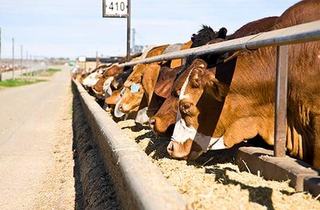Roma Yard Sales Hit Highest Level Of 2022


Weekly Cattle And Sheep Market Wrap
The Eastern Young Cattle Indicator (EYCI) softened at the end of last week and beginning of this week to sit at 1,112.30c/kg cwt, according to Meat & Livestock Australia’s (MLA) weekly cattle and sheep market wrap.
Roma reached the highest sales volume this week, with 6,173 cattle sold, the largest volume of sales at the yard for 2022, with most of the sales being yearling steers and yearling heifers, it reports.
MLA says strong feeder prices have encouraged producers to enter the feedlot sector for finishing instead of finishing on grass. Medium cow prices have also fallen 9 per cent week-on-week, with 78 per cent going to processors, it adds. This follows the medium cow reaching record highs last week.
The Western Young Cattle Indicator (WYCI), meanwhile, is the highest it has been since December last year, sitting at 1,152.85 c/kg cwt, it reports.
Sheep
MLA says light lamb prices softened 6.3 per cent week-on-week, with WA lambs in Muchea making up the majority of light lamb yardings.
Trade lamb prices are still declining, though they are stabilising, falling by only one per cent this week, it adds.
Slaughter
MLA reports goat slaughter volumes have hit a new record every week since the beginning of the year, with this supply increase reflected in the goat export markets with higher product flow, as domestic demand remains soft.
This week, however, goat slaughter softened to 33,553 head – a nine per cent decline week-on-week, it notes.
“Lamb and cattle slaughter rates are also down, with lamb slaughter down three per cent week-on-week by 11,000 head. This reflects … processors in Victoria and SA having public holidays,” MLA says.
Meanwhile, beef exports are down 12 per cent, reports MLA, especially in larger markets such as Japan with lower consumer confidence. Mutton exports are up four per cent but slaughter has declined year-on-year.
Weather
MLA notes the Bureau of Meteorology (BOM) outlook forecasts a neutral Indian Ocean Dipole (IOD) for the remainder of autumn, but it has extended on longer than previously predicted due to stronger-than-average trade winds. The IOD measures the difference in sea surface temperature between the western and eastern Indian Ocean. It affects the climate of Australia and other countries that surround the Indian Ocean Basin, and is a significant contributor to rainfall variability in this region.
Find more information on livestock properties and cattle farms for sale on Farmbuy.com







